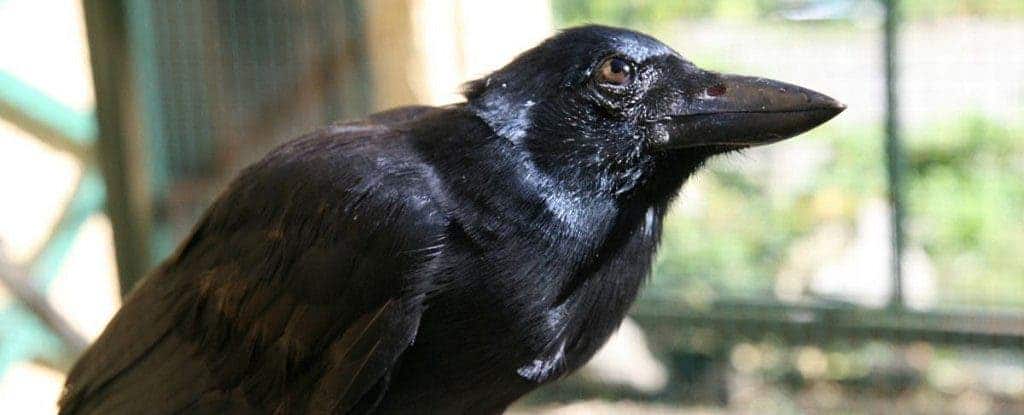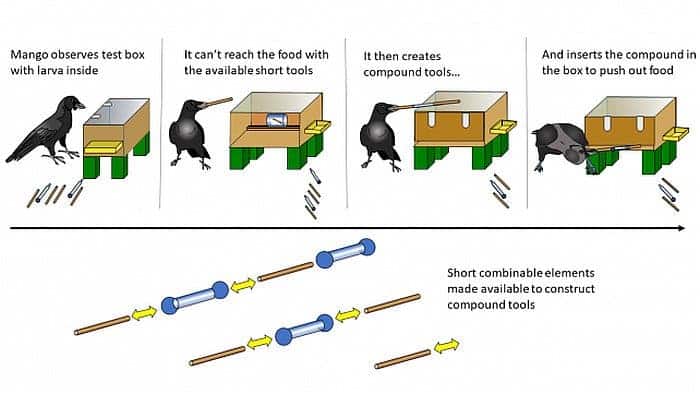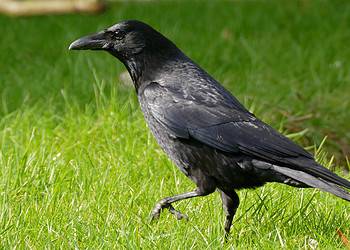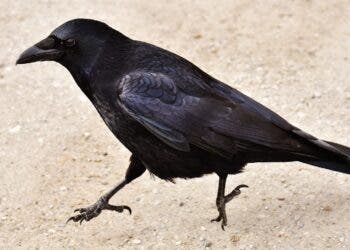Are you even surprised? This seems to happen quite a lot lately: we knew crows are smart, but a new study shows they’re even smarter — and it’s happened yet again. This time, New Caledonian crows combined individual tools they’ve never seen before to form a long-reaching tool.

We used to consider tool-making as a uniquely human ability, but now we know that’s not nearly the case. Not only do a number of other primates employ simple tools, but other, more different creatures (like crows) do the same thing. Several studies have documented the remarkable tool-making ability of crows (particularly New Caledonian crows), but now, they’ve surprised researchers once again: not only are they capable of using tools, but they can develop compound tools from individually-useless components.
“Except for few observations in captive great apes, compound tool construction is unknown outside humans, and tool innovation appears late in human ontogeny. We report that habitually tool-using New Caledonian crows (Corvus moneduloides) can combine objects to construct novel compound tools,” the study reads.
The scientists gave eight crows a “puzzle box” which contained food. Naturally, the crows wanted it. However, the treat was placed behind a door that only left a narrow gap along the bottom. The crows could see the food deep inside the box, but couldn’t access it. They were then given short sticks — way too short to reach the prize — and left to sort things out for themselves, with no demonstration.

But scientists did give the crows a bit of help: the sticks they left behind were designed to be combinable — one was hollow, allowing the other one to be slotted inside. Four of the eight birds had no problems figuring this out, and one bird, ‘Mango’, was able to make compound tools out of three and even four parts.
“The finding is remarkable because the crows received no assistance or training in making these combinations, they figured it out by themselves,” says Auguste von Bayern, first author of the study from the Max-Planck-Institute for Ornithology and University of Oxford.
Mango, as it turns out, was somewhat of a moody genius. He exhibited remarkable abilities, but sometimes, just didn’t want to do the task. His accomplishment, however, is particularly remarkable since it’s the first time any non-human animal has designed a tool using 3 or more parts.
“The successful birds acted in a seemingly purposive manner, using the compound tools to aim at the food immediately after creating them. This typically required transporting the compound to the box for use,” the researchers wrote in their paper.
“Except for one individual, Mango, a bird with apparently fluctuating motivation, the successful subjects also solved the task in the 3 opportunities that followed their first success. Mango refused to participate in 2 follow-up trials but succeeded continuously afterwards.”
The fact that the crows — who have such a different anatomy and mental structure compared to humans — were able to do this is remarkable. Tool-related behavior, especially innovative tool manufacture, is intimately associated with human evolution. Many anthropologists believe that this ability co-evolved with specific neurological capacities, particularly planning and complex task coordination. So how come crows developed this ability?
The species seems to have an innate propensity to build tools, and a remarkable ability to innovate. But understanding how their mind works remains a challenge for future research.
Alex Kacelnik from the University of Oxford says:
“The results corroborate that these crows possess highly flexible abilities that allow them to solve novel problems rapidly, but do not show how they do it. It is possible that they use some form of virtual simulation of the problem, as if different potential actions were played in their brains until they figure out a viable solution, and then do it. Similar processes are being modelled on artificial intelligences and implemented in physical robots, as a way to better understand the animals and to discover ways to build machines able to reach autonomous creative solutions to novel problems.”
Journal Reference: A. M. P. von Bayern, S. Danel, A. M. I. Auersperg, B. Mioduszewska, A. Kacelnik. Compound tool construction by New Caledonian crows. Scientific Reports, 2018; 8 (1) DOI: 10.1038/s41598-018-33458-z






